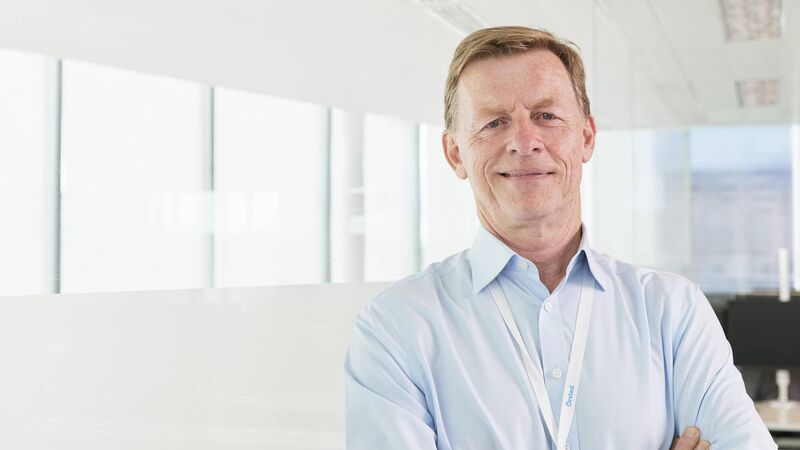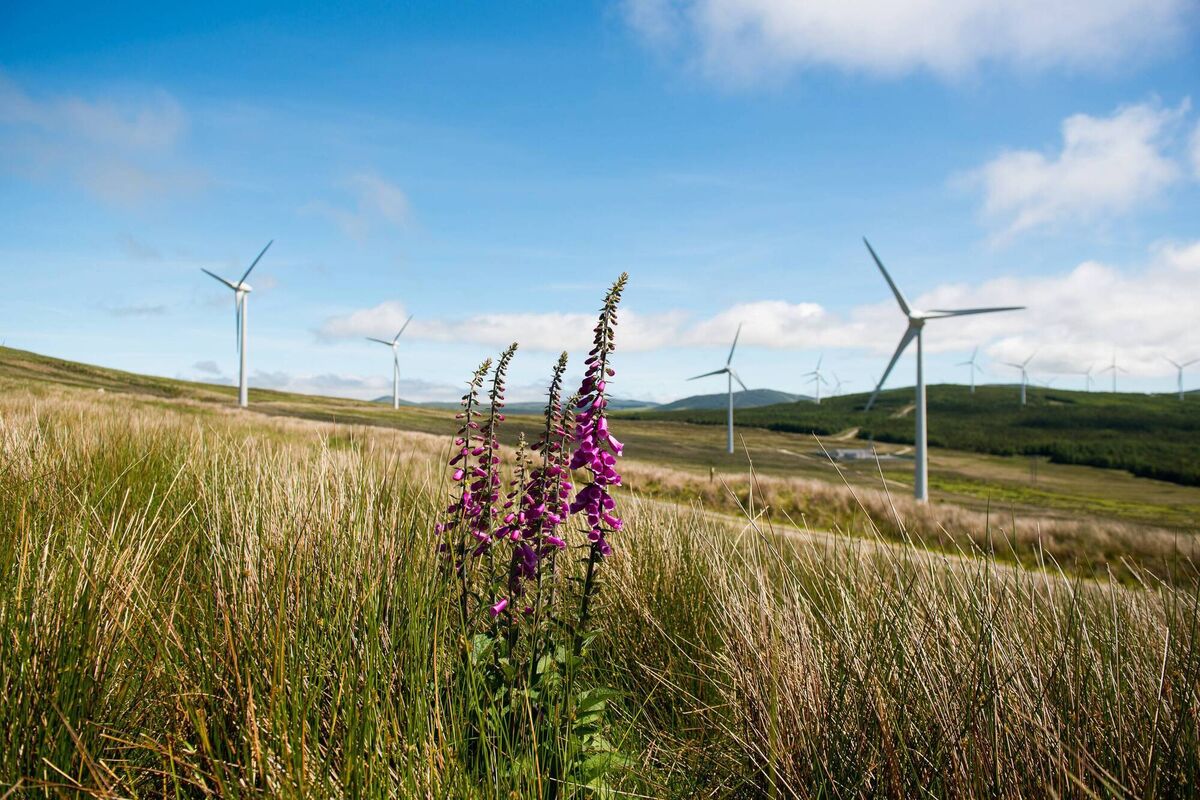Renewable energy is top priority as electricity usage is set to double, says Ørsted leader

Kieran White, SVP Europe Onshore at Ørsted, says: “Our energy system, businesses and wider society needs to undergo huge change over the next 25 years, if we are to hit our net zero ambitions, and that should come under the umbrella of one department.”
Clonakilty man Kieran White is SVP Europe Onshore at Ørsted. He’s a man who’s happy in his job.
“I feel fortunate,” he says, “given that I’m working for a great company, one with a very clear mission and crucially, one that wants to do the right thing.”
Describing Ørsted as an organisation that some time ago recognised the importance of decarbonising industry and society and whose vision is to create a world that runs entirely on green energy, he adds: “As for me, I feel that whatever experience I can bring to bear, I do.”
Almost two years ago, White was CEO of a business in Ireland that was owned by Brookfield Renewable. When Ørsted acquired Brookfield in 2021, White and his team were kept on. This speaks volumes to their credit.
Within 18 months of the acquisition the Cork team, led by White, Ørsted's European Onshore business grew from being virtually Irish-based, with some interests in the UK, to one with strong Irish roots still, and centres in the UK, Germany, Spain and France; all continuing to being led out of Cork.
The overseas expansion was matched by Ørsted growth in Cork, with 40 new, highly-skilled, roles created there since 2021.
With electrification, a core factor in tackling the rapid decarbonising task that faces humanity, much needs to be done, correctly and at speed.
White says: “We’re looking into a future where the consumption of and demand for electricity is going to more than double. For this, we need higher renewable generation capacity and additional wires, to get the power from where it’s generated to where it’s used.”
Ireland, White says, is quite significantly behind in terms of investment in the scaling up of transmission systems.
“While targets for 2030 have been set, and they’re useful pointers, come 2030 the job won’t be finished. It will continue beyond that.
“As a country we need to be contemplating both the connectivity we require on this island and also the connectivity from Ireland to the UK and to continental Europe, so that power can, when needed, be transmitted in either direction.”
We’re building connectivity to France via the Celtic Interconnector, but that’s not enough. “Our grid capacity requires a lot more investment to facilitate the growth of renewable electricity,” says White.
“Eirgrid seeks to continue to invest in its infrastructure, but we need to think bigger. We must correctly anticipate what our future society is going to look like, and the level of electricity demand that will be required.”
White says the system demand for 2030 will require more pylons and more wires across the country. “Wires can be buried underground, but it costs more to do that,” he adds.

He would: “There really isn’t any other option. Funds are not the issue because there’s plenty of capital. It’s more about will. This is going to be somewhat controversial, but the consequences if we don’t act, are that in parts of the country, the lights won't turn on when we want them to.”
While energy infrastructure investment needs to scale, permitting times must decrease for renewable generation projects such as wind farms.
“Objections and judicial reviews increase wait time and, in this context, the new Planning and Development Bill is welcome,” he says. “Only when legal challenges are cleared, can you apply for access to the grid.
“When access is granted, what follows then is a wait to be connected. If you add all of that up, unfortunately you’re currently looking at a wait time of seven years at best, right up to ten years before a project may be realised.”
White passionately believes that to hit our 2050 climate targets, we need to be ‘tying it all together’ better than we are.
“I think Minister [Eamon] Ryan is genuinely making an effort to do the right thing, with a very broad portfolio,” he replies. “What I’m advocating here, is that a portfolio be established with the authority and end-to-end responsibility across the energy sector to ensure we have the plans and capability to deliver a very different energy infrastructure come 2050.
“Our energy system, businesses and wider society needs to undergo huge change over the next 25 years, if we are to hit our net zero ambitions, and that should come under the umbrella of one department.”
We talk then of how the journey forward will impact the public and so many institutions and bodies.
“The development of a significant offshore wind industry in Ireland will have to co-exist with fisheries and the recreational use of the seas. It will also impact our ports, which require investment to upgrade them, to enable the installation of wind farms off the coast of Ireland.”
For Ireland to deliver on its offshore wind ambitions, we will need to secure the services of a global supply chain including turbine manufacturers, and the enormous vessels that can then transport and install them in the seabed.
“Those vessels are in demand in the US, in Asia Pacific, in the North Sea and elsewhere,” says White. “At this stage, virtually every country with a coastline is competing for access to these same services to deliver their offshore wind ambitions.
“When considering investing in Ireland, investors want clarity on how it’s all tied together, so they can see themselves realising a project here. Right now it feels as though we have some parts in place, but we’re missing key components. This does not generate confidence.”
“What we need is to be able to show a clear pathway, including timelines, for a project. Along the way, whether it is onshore or offshore, we must also address permitting, and grid infrastructure. Frankly, a lot hangs on those two key issues,” he replies.
“If you have something connected, you can dispatch it into the market and you may have a government backed contract for the price you’re going to get for your power. That enables you to come up with an investable project. But it’s taking too long to get the first two parts in place, to reap the benefits of the third.
“Offshore we are setting up a new authority for the permitting of offshore wind farms. Yet it is for Eirgrid to come through in relation to connecting those farms. How these two entities will work together will be crucially important from an investment perspective.”
On a positive note, White references the renewable energy support schemes we have for onshore which are also being made available for offshore.
“They’re good schemes which have enabled the development of our existing wind farms so we now create 40% of our electricity generation from renewable sources,” he says. “So in this instance, Ireland’s doing quite well.”
White is not confident that we will meet our 2030 target. As for 2050, he says: “There’s a long way to go yet. But if we can resolve some of the issues discussed, I think Ireland can go a heck of a long way towards reaching that 2050 net zero goal.”








